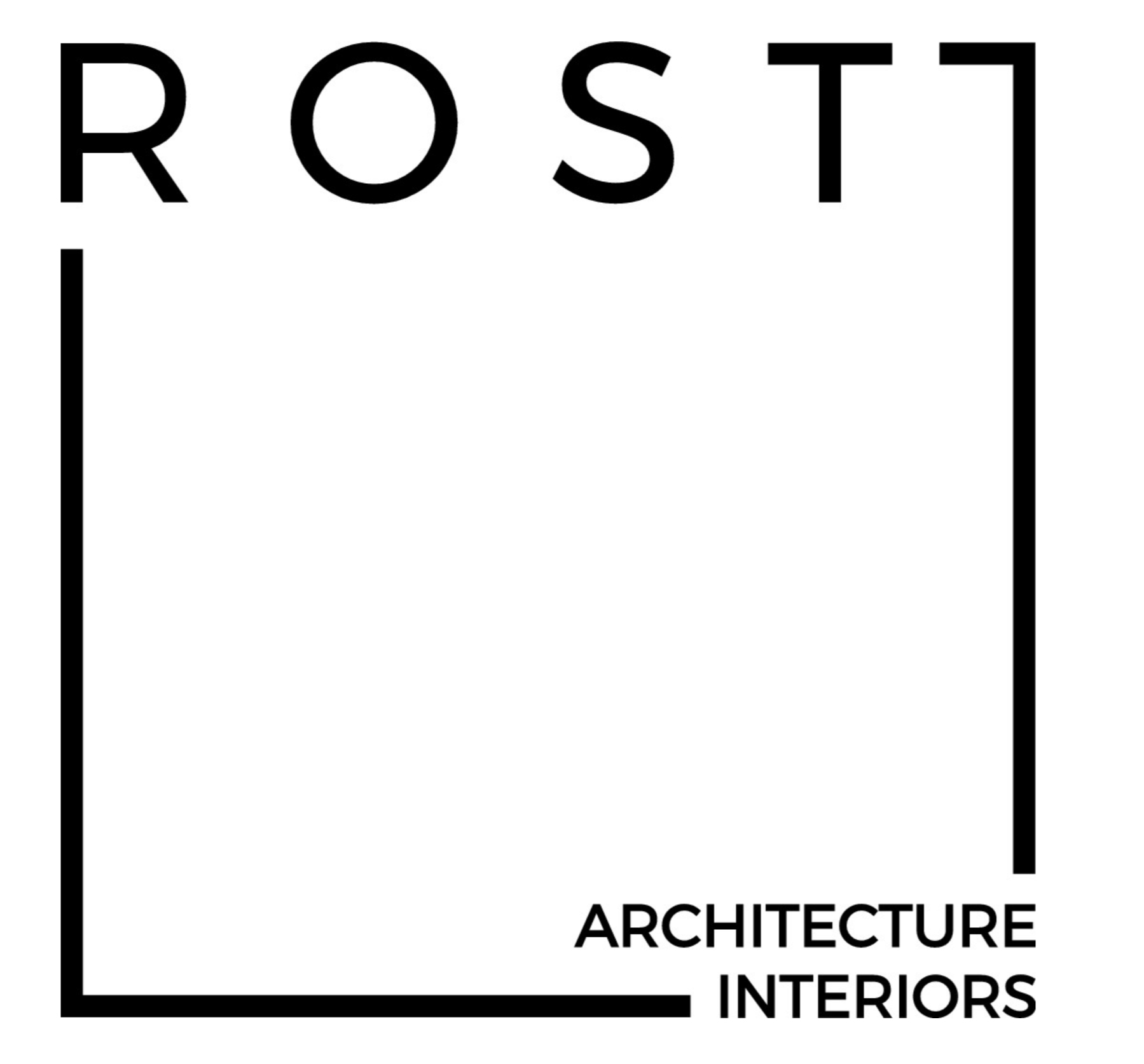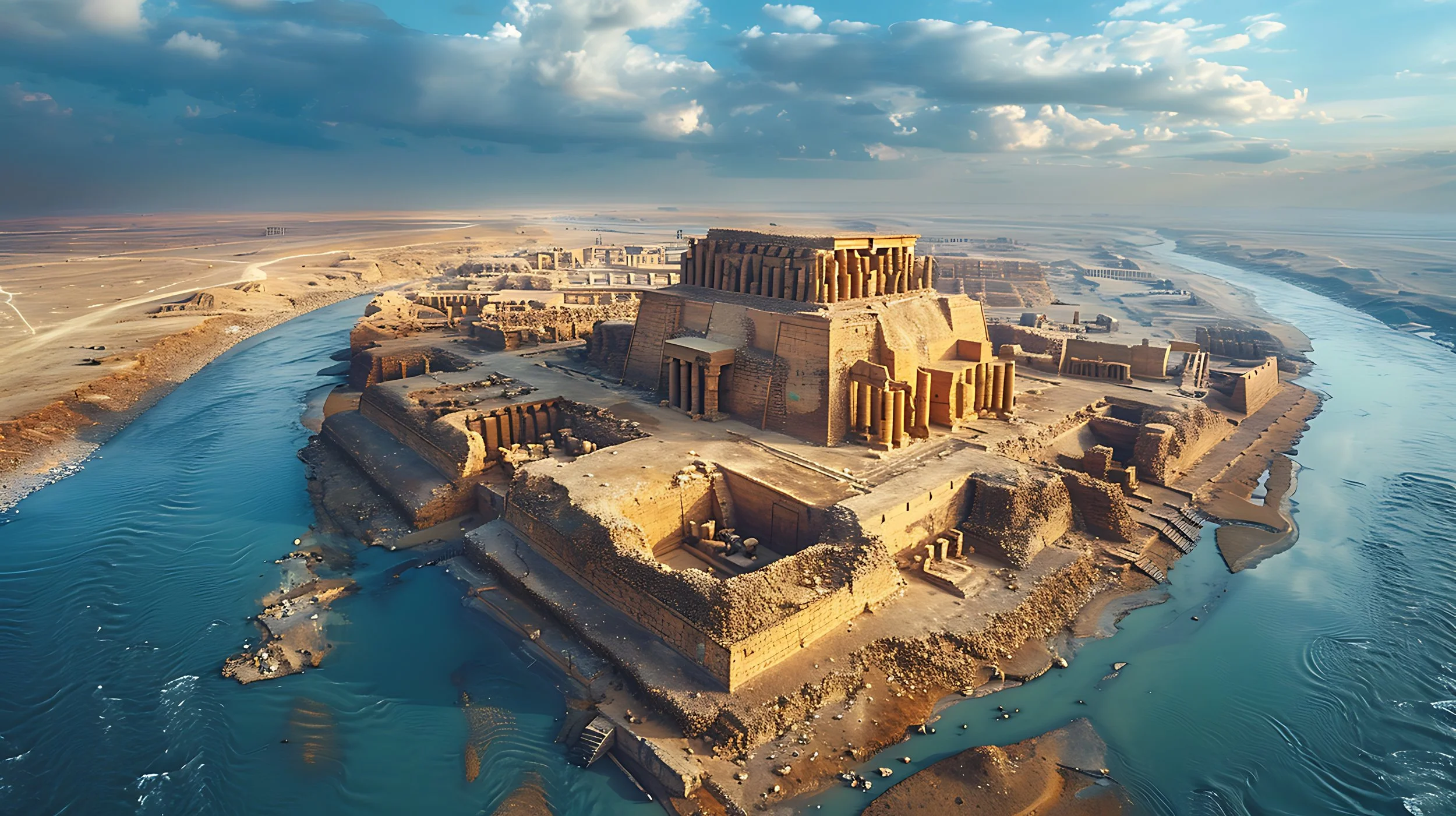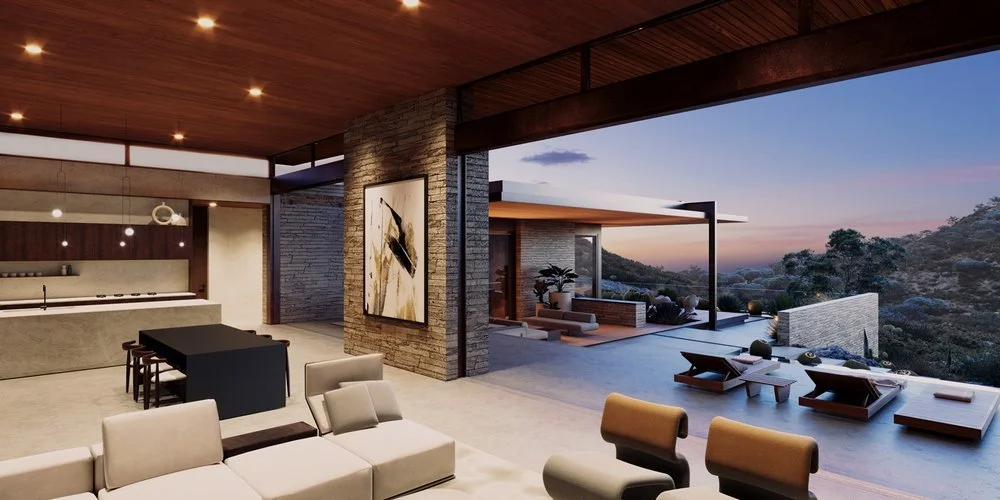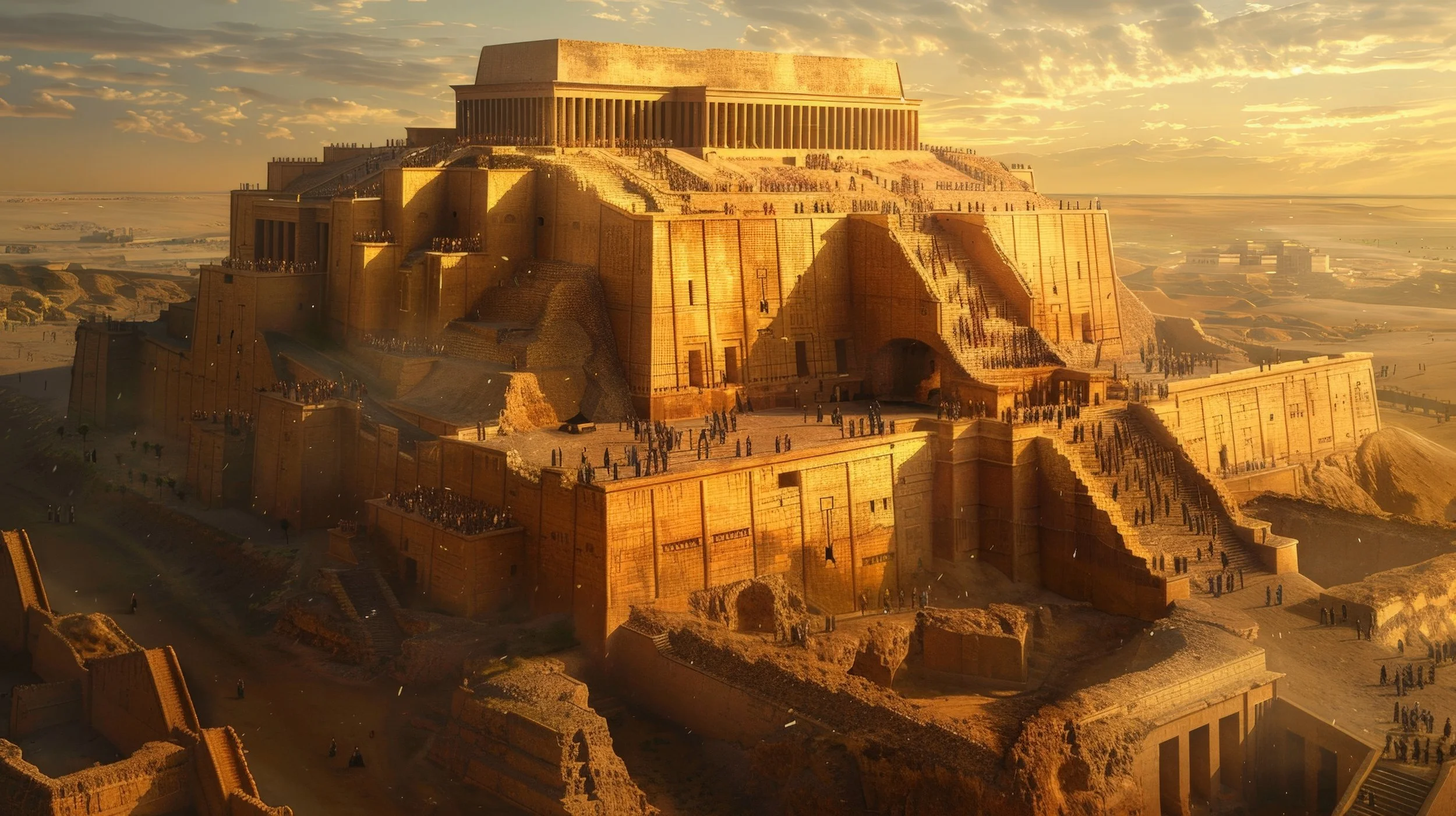Contemplations of the Built World: Values of the City
Today I want to talk about a shift that occurred especially in Western civilizations around the 16th century which really had an effect on what our built environments began to look like. Previously, in the Medieval Era, many of the development and City formation, City growth, was a product of the religious institutions. So, the church, monasteries, those were the drivers that helped to catalyze a lot of growth. At that point there's a real palatable and identifiable shift into a more capitalistic mode of development and growth so there's this real strong interest in wealth accumulation individual wealth building, business building, and economy that began to occur in western civilization at that time. Yes, economic trade, capitalistic endeavors, business, had been occurring for centuries all over the world prior to this.
So, before this shift we really see cities developing with a more humanistic approach or around a more humanistic approach so ideas of spirituality, culture, the arts, were really present in a lot of the architecture and Urban Design that we see prior to this time. So, ornate buildings with a high degree of artistic craftsmanship are present right? I think everybody can identify that in a lot of these cities. So, the quality of the city became and the character in the buildings of the city became less concerned with the human experience and the human individual and basic fundamental human, let's say needs and much more concerned about the fabric of the city as an investment, as a piece of as an object of wealth accumulation. Once we detach from that consideration, we see the quality of life in the cities begin to suffer. We see what would evolve into a much more industrialized approach occurring. It was a city filled with a lot of utilitarian emptiness. It was a city filled with buildings that had little character, little soul. They were flimsy, they were of low quality, I've heard people refer to it as human filing cabinets. They really don't take much consideration, if any at all, into the day-to-day life, the more primitive needs, of the human occupants of the buildings. Fundamental things such as light, natural breezes, fresh air, open green space. These are really put on the back burner and, again, it produces buildings, specifically apartment buildings, that really create an isolating feeling to those inhabiting them. Yes they can often generate large returns for the owners and investors in those buildings, however the quality of life that is present within those buildings is often sacrificed.
So, after this shift a lot of these buildings start to lose a lot of that high level of craftsmanship, care, identity, architectural interest, and they begin to display a value set much more based upon financial return of the building. We begin to see grids, rigid, relentless grids being put in place in many of these cities, in which speculative development became prominent. Granted, the grid had been around since Roman times. However, there was this overemphasis and over rigidity and widespread overlay of grids on many cities.
So, the city began to grow outwards as investors, developers, around that time started to see the opportunity to build low cost, maybe call it low quality, structures for tenants or people to buy as a means for them to reap large financial rewards; this is capitalism. And I'm not saying this is a bad thing, I think capitalism is at the foundation of all great cities and societies. However, the question I want to propose is, and through this kind of study of history, is: Have we over prioritized it in our kind of value and goal sets in developing buildings and cities? I think to some degree we have. I think that's fantastic to build great businesses, build assets, build real estate portfolios for people, however, again, the question is: Can we look at a potential real estate investment not just through a single metric of what will be the financial return of this building, rather “Okay, what's the financial return?” and in tandem to that, potentially, “What also is the kind of humanistic contribution to the city that I can make through this building? How am I going to impact people's lives? How am I going to impact the quality of the city?” I think that's a much longer term and more mature approach to city building and, consequently, it actually will in most scenarios provide a higher yielding real estate asset over the long run, over the lifespan of the building. The real goal, is “How do I build a quality space within it, within an identifiable budget, of course, as all building projects need to adhere to, but how do I build a quality space that humans want to be around, they want to inhabit, they want to be part of? How am I contributing to the city?” If you have that sight in the back of your mind while you're doing these projects you're more likely to create a sustained long-term steady growth of interest in an area you're going to create, an area with more character, with more higher quality, with a deeper, more humanistic value set that I believe is palatable and identifiable by people. So, I would encourage people as they think about what their current cities look like, what the cities of the future would look like, how would architects, urban designers, developers, how are we to develop new building, city structures? What's the value set behind those buildings? I think that's an incredibly important and often overlooked analysis, because as a society, especially in Western culture, we just take this kind of very overly skewed capitalistic approach towards real estate projects, and I'd encourage everybody to kind of look beyond that into what I would consider a more mature approach to building and development.
Alain de Botton, he's an author in the UK, talks a lot about this, especially in his most recent work, he's the author of a book called “The Architecture of Happiness” which is phenomenal book, I'd highly recommend reading that. But lately he's been really talking a lot about the kind of overlay or interlap of individual psychology, collective psychology of a society and the urban built environment, which I found fascinating and frankly it has not been given the amount of attention that it really needs. But what he says is that if you look up at the skyline of a city and you see the large buildings, the skyscrapers, the, you know, the big buildings in the city, you're able to decipher the kind of true value set of that city okay? So, if you look at a lot of North American cities, in the skyline, you're going to see skyscrapers, large buildings, that house large corporate hedge funds, large pharmaceutical companies, fast food empires. Not to say that these are bad, but it is a clear vision into the values of what our society, and a lot of these companies are based upon pure financial return, right? So, they are businesses as they should be, their priority, or their primary goal, is to develop large returns, right? I'm not saying that's a bad thing, I'm saying can it be rebalanced with a more humanistic, well-rounded, goal structure, so that profit is not the single obsessive metric of these companies and thus of these buildings, right? So, can our big buildings and our cities reflect more cultural buildings like they do in many European cities? They reflect spiritual buildings, right? I'm not saying anything specifically about spirituality, religion, whatever that may be, however, I do think that having these large buildings reflect more humanistic values such as spirituality which has been a part of human history since the beginning of time, what does that do to somebody experiencing the city versus them seeing one of the big buildings dedicated to a large corporate hedge fund.
So, in summary I'd like to again propose the question that we should ask ourselves which is: Can we reassess our value structures as we create our cities for the future and as we make modifications and renovate our current cities, towards a more humanistic approach? I don't believe that there needs to be a full shift away from the capitalistic profits or returns, financial obligations of real estate projects and building projects. I think that is an essential fundamental requirement that all projects need to adhere to, to make sense. However, the question is: Can we incorporate or redistribute some of the, let's say, financial resources, some of the interest, and some of the development of these projects towards more humanistic approaches which will facilitate cultural flourishing, will facilitate a more enjoyable, more comfortable, human experience in these buildings and areas of cities. If we can do that, I think that paradoxically they will generate environments that people want to be in, it will stimulate economy, it will raise rental rates, it will create attractive areas that families want to be in, all of which will, again, paradoxically increase, you know, probably the financial returns of that area. So, I think it's just a matter of looking at this thing from a longer term approach, right? As opposed to what I would consider a short-term approach which would be immediate financial returns or the kind of only looking at it from “what is the investment value? Or what are the rental rates that I can accumulate from this development?” It's really saying “Okay, maybe I sacrifice a bit of the short-term returns of the building and invest those into other areas that will promote a more, a deeper, kind of cultural meaning to the city, architectural aesthetic, that's a bit more pleasing, a more humanistic environment that allows more public space in the development, more light to enter, the flow of air in and out of the building, fresh air, light, all of these things. Can we take a bit from the short-term profit and allocate it to those different more, I’d call more design related criteria that will create better environments for humans to live in, in the long term. That's the question I want to propose. I think it's completely realistic. I do think it takes a bit of a value shift in our society because it seems at the moment we are very very concentrated on especially in the real estate industry, we’re very fixated on immediate financial returns, buildings spaces, cities, are looked at purely like an object of financial investment and I would encourage us to look at that, look at them, to be for their ability and capacity to be far more than that. I think that's really short selling what a building, an environment, a city, can be.






























Principal and Architect of ROST Architects, Mitchell Rocheleau, discusses the significance of The Grand Louvre designed by Architect I.M. Pei, the history of the Louvre, design process, design theory and ideas behind the project.